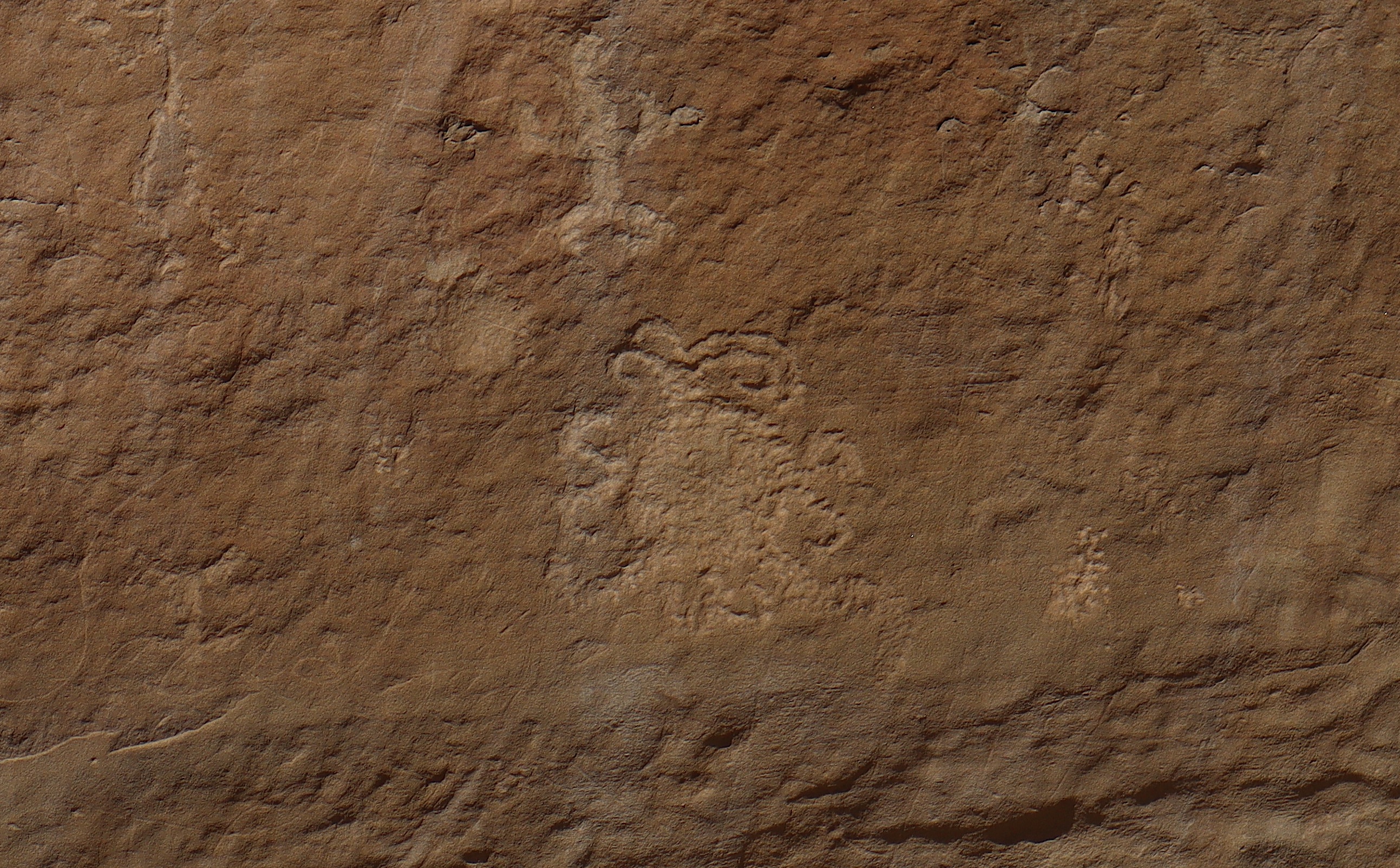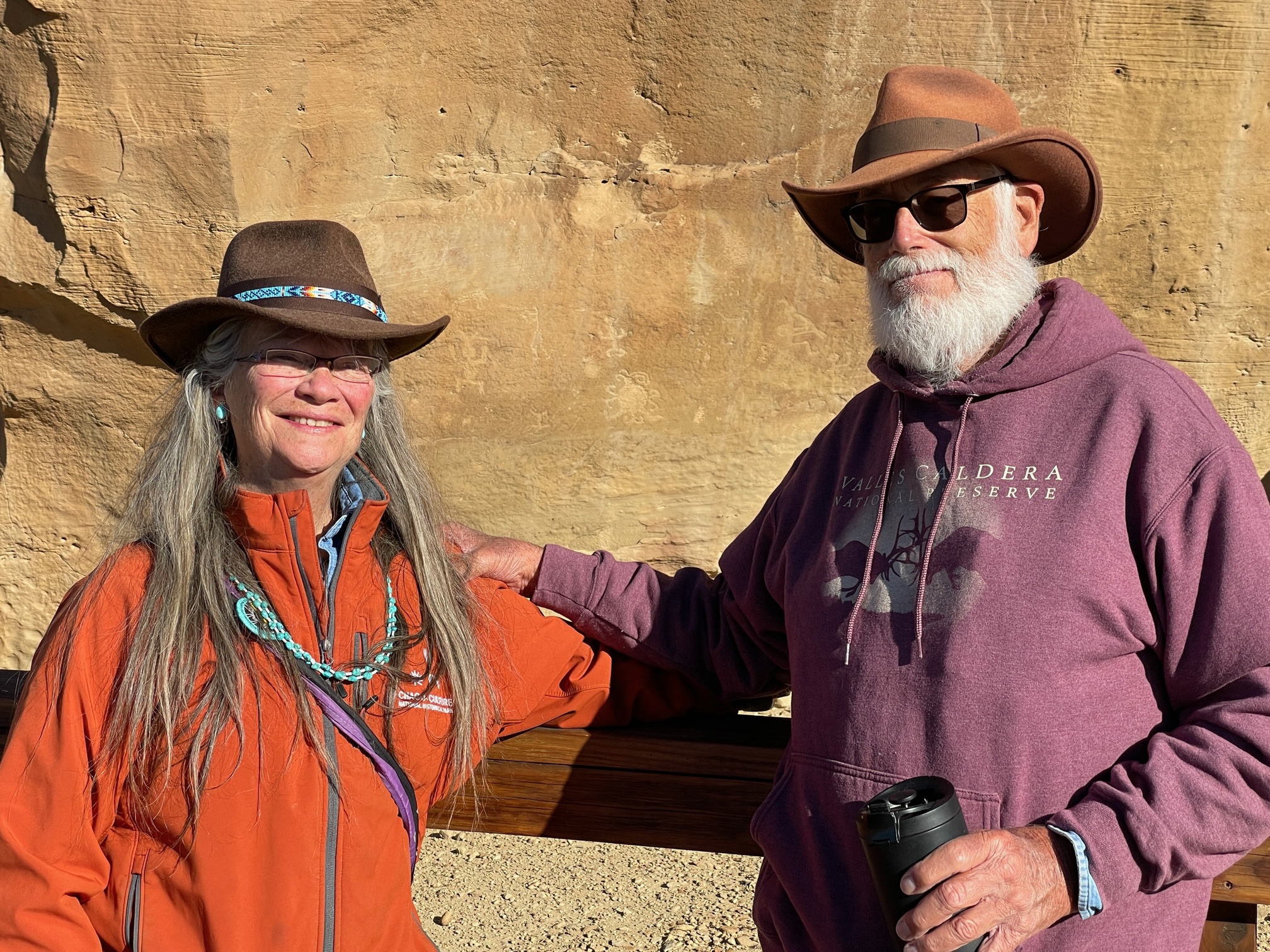What the 'ring of fire' eclipse looked like from the home of ancient solar astronomy
Eclipse-chasers and archaeo-astronomers flocked to Chaco Canyon in New Mexico to see annularity from the home of the famous 'Rock of the Sun' petroglyph.
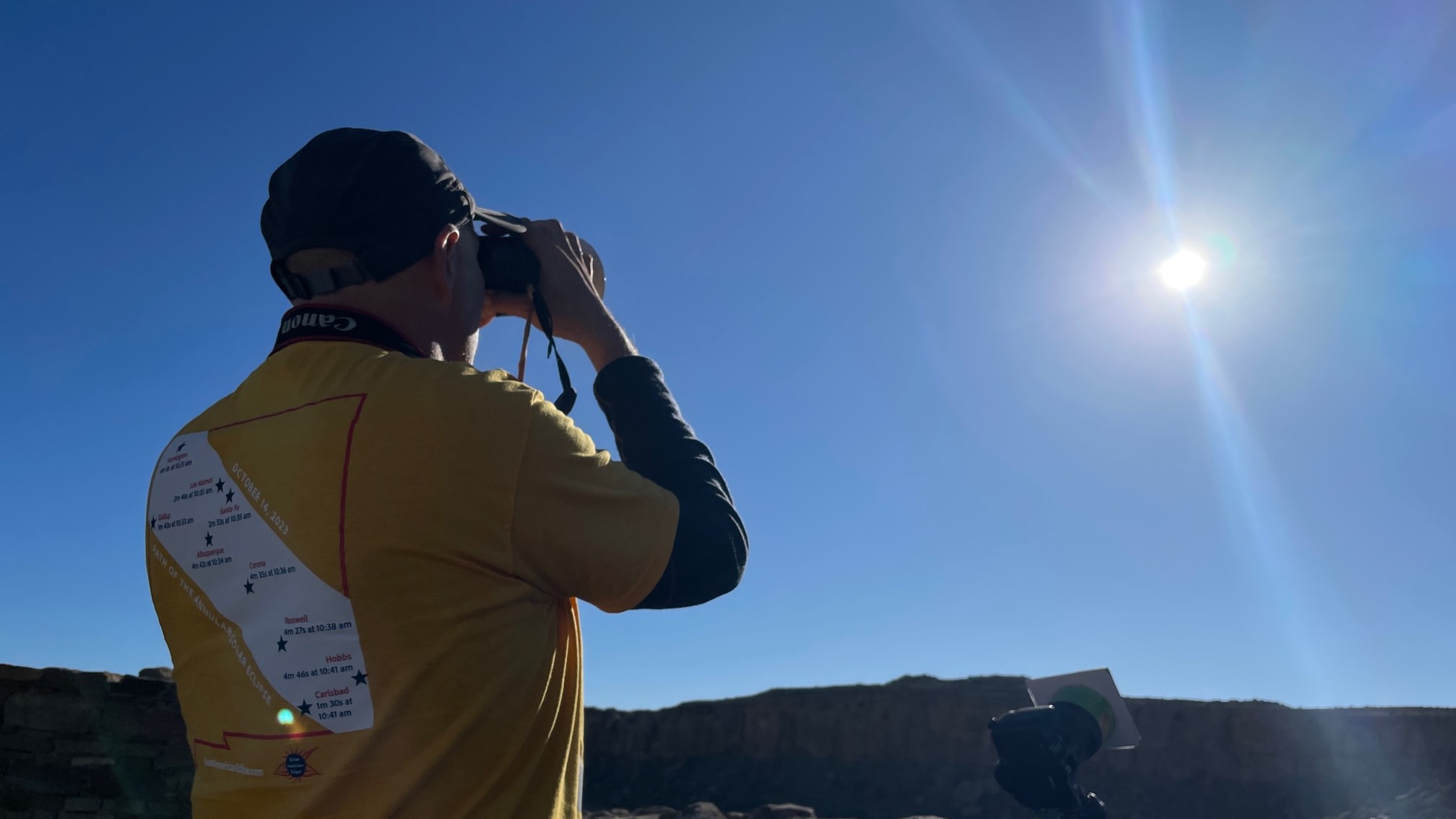
CHACO CANYON, New Mexico — Solar eclipses occur in patterns that far outlast a single human life, but just occasionally it's possible to see them echo through deep time.
Such a rare occasion was possible on Saturday, Oct. 14 at precisely 10:34 a.m. MDT when a "ring of fire" appeared in the sky for 4 minutes 48 seconds above Chaco Culture National Park in New Mexico.
It hung over the ancient kiva — great houses — of the ancient Puebelon people, for whom Chaco Canyon was a center between AD 850 and 1250. With solstice, equinox and lunar cycle markers at almost every turn, Chaco Canyon is also home to some of the oldest known sun-watchers.
That tradition continues today. By 6 a.m. on Oct. 14, the dark dirt road to the remote was lit by red taillights. With only 150 parking spaces in the canyon, the race was on to get to one of its archaeological sites by 9:12 a.m. to witness a long "ring of fire".
Related: Fire in the sky: Chasing the annular solar eclipse 2023 on the Extraterrestrial Highway
Despite the traffic, the bone-shaking bumps of road 7950 — damaged by heavy rain less than a month ago — easily removed all traces of the 21st century. A herd of elk greeted my wife and I, followed by park rangers handing out car parking permits. By 8 a.m. we were parked beside Casa Rinconada, home to the greatest kiva house of all.
This wasn't the first time an eclipse had come to Chaco. The last annular in the U.S., in 2012, was witnessed in the canyon, but several eclipses also occurred here when the ancestral Puebloan civilization was at its peak. One of them appears to have been recorded. Discovered only in 1992, the "Rock of the Sun" petroglyph is carved into a boulder alongside other images — one possibly the planet Venus. A tangle of loops around a round object, it's reminiscent of the solar corona during a total solar eclipse.
Breaking space news, the latest updates on rocket launches, skywatching events and more!
It's thought to represent what Pueblo people saw on July 11, 1097, when totality occurred at Chaco for 5 minutes 1 second. Just to make it more convincing, the sun was particularly active at that time, say scientists, when huge loops and prominences were possibly visible. Totality was witnessed from Chaco again in 1194 and 1259 — when the region is thought to have been deserted.
"If this petroglyph really is a representation of a total solar eclipse in 1097 it's of an event that Chacoaons could not have missed — and it was at a time of high solar activity," Cherilynn Morrow, director of the Public Engagement program embedded in NASA's PUNCH mission, told Space.com.
She witnessed Saturday's "ring of fire" close to the "Rock of the Sun" as the eclipse progressed above Fajada Butte, where dagger-shaped beams of sunlight appear at equinoxes and solstices. "It was a marvelous experience and we had perfect skies," said Morrow, who conducted tours of the petroglyph panel all weekend. "It was a celebration of the sun and the moon joining and it was so uplifting."
As the partial eclipse progressed beyond about 50% the light levels in the canyon dropped significantly along with the temperatures. A grayish light descended as the eclipse progressed. Shadows from the jagged edges of the canyon and the ancient structures turned fuzzy. Chaco Canyon can rarely have looked more dramatic.
From my observing position beside the great kiva at Casa Rinconada the perfection of the "ring of fire" mesmerized the 15-or-so eclipse-chasers around us who had been lucky enough to get in.
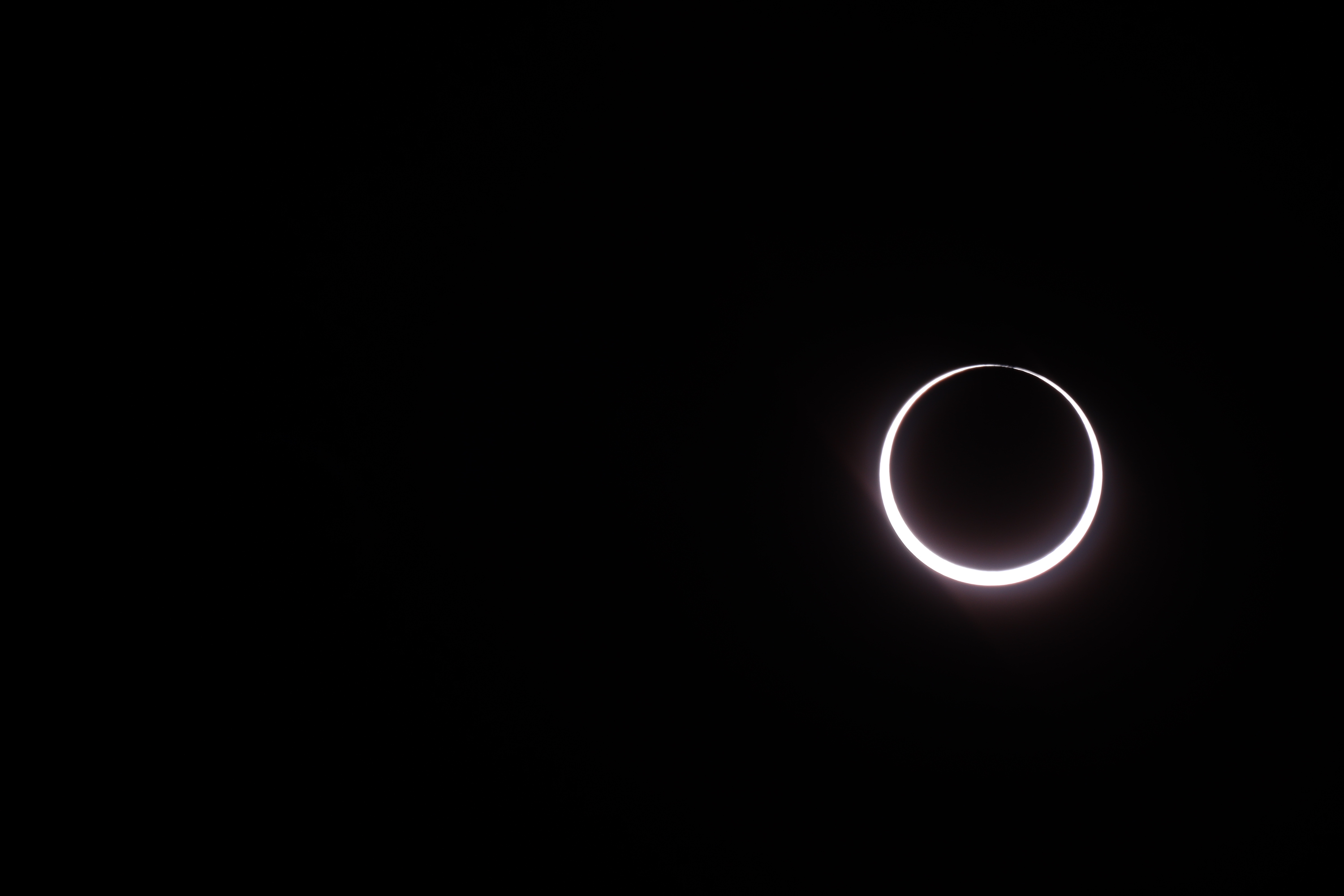
The "ring of fire" hangs above Chaco Canyon in New Mexico on October 14, 2023.

The "ring of fire" hangs above Chaco Canyon in New Mexico on October 14, 2023.
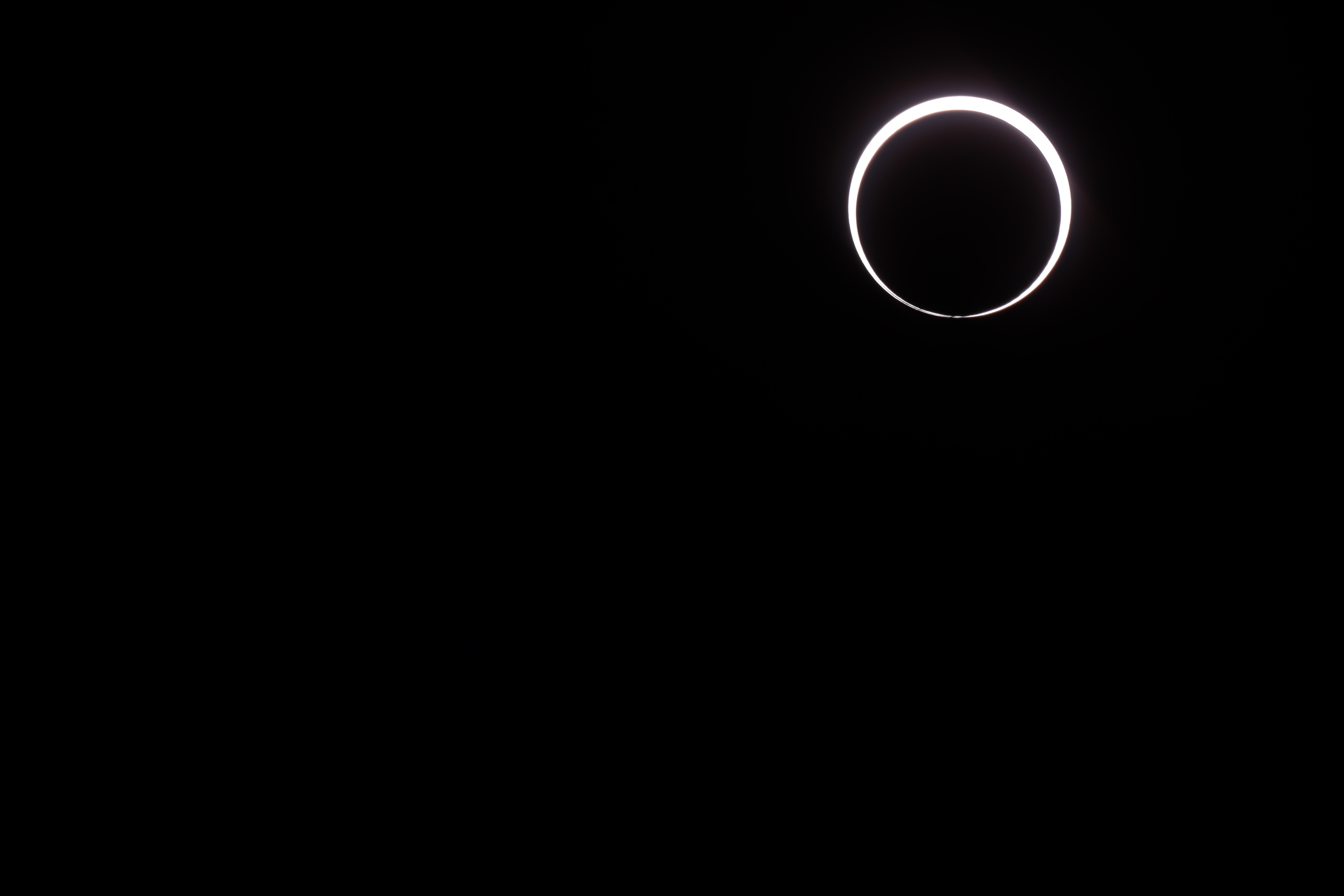
The "ring of fire" hangs above Chaco Canyon in New Mexico on October 14, 2023.
On either side of annularity, Baily's beads were visible for a few seconds. One observer used his camera to project a "smiley face" crescent sun onto the walls of the ancient kiva. In the distance a large bull Elk crossed the canyon. As the ring appeared a few "whoops" echoed across the canyon.
Casa Rinconada is an archaeoastronomer's playground. The eclipse occurred above a mesa upon which the Ancestral Puebloans appear to have marked the sunrise points throughout the year. "It's a very sacred place for the descendants of the ancestral Puebloans and people who made Chaco an ancient sun-watching place of an extraordinary nature," said Morrow. "The kiva is so amazingly aligned to modern precision north, south, east and west."
For many, the day had been a culmination of a long-held ambition. "I wanted to experience the ring of fire in a location with deep archeoastronomical significance and I knew Chaco would be the perfect location," Mike Shaw, an astrophotographer who organized a workshop specifically to photograph the "ring of fire" and witnessed it from Pueblo del Arroyo in the canyon, told Space.com.
"I felt a deep sense of belonging and sense of place," said Shaw, who partly chose Chaco 18 months ago because it was only 0.5% of the path width away from the central line. Consequently, the ring exhibited almost perfect circular symmetry. "The temperature dropped noticeably as the eclipse progressed and I was surprised at how many birds started singing towards maximum annularity — I hadn't noticed many songbirds in Chaco before," Shaw continued.
The next total solar eclipse observed from Chaco won't be in the lifetimes of anyone in the canyon today. Totality from "Rock of the Sun" next happens on July 3, 2866, for 4 minutes 59 seconds, according to the Five Millennium Canon of Solar Eclipses, but today's "ring of fire" was an irresistible opportunity to be immersed in Chaco's unique astronomical history.
With the eclipse over and the crowds deserting, the canyon emptied of people once again, just as it had done centuries ago soon after an eclipse. We searched for petroglyphs in the walls and gazed at the Milky Way after sunset.
The next morning the sun rose to an empty canyon. Wrens squeaked and a cottontail ran along a ledge into a cliff dwelling. Normal service at Chaco Canyon had been resumed.

Jamie is an experienced science, technology and travel journalist and stargazer who writes about exploring the night sky, solar and lunar eclipses, moon-gazing, astro-travel, astronomy and space exploration. He is the editor of WhenIsTheNextEclipse.com and author of A Stargazing Program For Beginners, and is a senior contributor at Forbes. His special skill is turning tech-babble into plain English.
